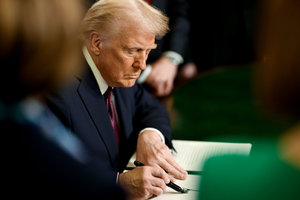Key Points
-
The US H-1B visa program allows 85,000 skilled workers each year, primarily in tech.
-
Australia’s tech industry has been calling for more support and skilled migration pathways.
-
Experts say the US decision presents a major opportunity for Australia to attract global talent.
Trump’s H-1B Visa Order
US President Donald Trump has announced a sharp increase in the cost of applying for skilled migrant visas, raising the fee to US$100,000 (A$151,000). The move has unsettled the tech industry and current visa holders, with analysts predicting a steep decline in applications from major firms like Amazon, Meta, and Google.
The White House said the fee hike, effective from 21 September, was designed to prevent what it described as the “exploitation” of the program, which it claims has replaced American workers with cheaper foreign labour. Existing applicants will not be affected.
Australia’s Migration Landscape
At the same time, Australia faces a looming skills shortage. The federal government has set a target of 1.2 million tech-related jobs by 2030, requiring an additional 500,000 skilled workers to enter the labour market.
Recent changes include:
-
Clearing the COVID-19 visa backlog to speed up skilled worker entry.
-
A new visa stream introduced in December 2024 to target in-demand skills such as cybersecurity, construction, health, and agriculture.
Former deputy secretary of the immigration department, Abul Rizvi, described Trump’s move as an “enormous opportunity” for Australia to access highly skilled talent if local employers actively recruit and sponsor them.
Industry Response
Australian tech companies see the potential but stress the need for policy changes. Emma Seymour, CFO of software firm Deputy, argued that with faster visa approvals, recognition of overseas qualifications, work rights for partners, and clear pathways to permanent residency, Australia could become a “top-tier choice” for skilled migrants.
She highlighted Australia’s advantages:
-
A unique time zone between the US and Asia.
-
Strong universities and a trusted regulatory environment.
-
Growing opportunities in AI and workplace technologies.
Skepticism Remains
Not all experts believe Australia can capitalise fully. Anna Boucher, a senior lecturer in migration policy at the University of Sydney, noted that while H-1B visa holders could relocate globally, Australia is not yet viewed as a major tech hub.
She pointed out that infrastructure, industry readiness, and the relatively small scale of Australia’s skilled intake could be limiting factors.
Migrant Challenges in Australia
Migrants already face barriers when transitioning into Australia’s workforce. Many arrive with strong qualifications but struggle to find work matching their skills.
-
A report by Settlement Services International (SSI) found more than 621,000 migrants are underemployed or working below their qualifications.
-
This mismatch costs the Australian economy an estimated $9 billion annually.
Mentor Yaser Naseri shared his personal experience of re-skilling in Australia, only to face difficulties due to employers prioritising local experience.
The Road Ahead
While Trump’s policy may redirect top global talent, the question remains whether Australia can position itself as an attractive destination.
According to Rizvi, highly skilled H-1B visa holders are unlikely to face the same challenges as other migrant groups. The real test will be whether Australian tech firms actively pursue and integrate this talent.


You must be logged in to post a comment Login